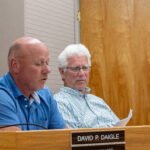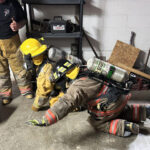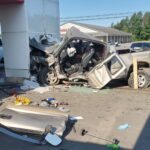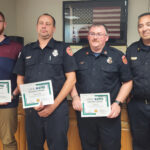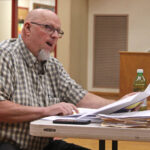B
PRESQUE ISLE, Maine — Councilors met with members of the Planning Board, Planning and Development Director Ken Arndt and City Manager Jim Bennett on March 24 to discuss Presque Isle’s transportation needs in coming years.
Present for the discussion, in addition to Bennett and Arndt, were: Council Chair Emily Smith, Deputy Chair Randy Smith, and Councilors Dick Engels, Pete Hallowell, Craig Green and Mike Chasse; Planning Board Chair Bruce Roope and members Pat Cote, Ward Gerow, Mike Mathers and Pam Sweetser; and Deputy City Manager Martin Puckett,
“The purpose (of this meeting) is to ask questions and see where we want to go in the next five to 10 years. Years ago we wanted to address the east-west traffic, now the first section of the bypass is nearing reality. It’s time to come back and take a look at that,” said Bennett.
Arndt provided a brief update of the city’s comprehensive plan from its status in 2008.
“We’ve been working regularly at it. The issue of the bypass was in the plan. We wanted the bypass to be as close to the built-up area as possible. That whole process took us from 2008 to about 2010, with the Council and Planning Board having a joint discussion in terms of phasing. It takes years to do these things,” said Arndt.
Arndt said the environmental work for the bypass has been done and “the section from the Fort Road to the Conant Road is moving ahead.” He said while the Maine Department of Transportation is doing their own analysis, city officials “did a Maysville and U.S. Route 1 analysis.”
“We’re looking at whether something could be done at the intersection of the mall with traffic without immediately crossing the river,” said Arndt. “In 2010 we came up with suggestions, including for the intersection of Route 1 at the mall and another was the five-point at Parsons and State.”
Arndt said transportation includes all modes of moving both vehicles and pedestrians.
“We have trains, though we had a setback when the rail line went bankrupt. Fortunately the state took it over and found a user. The airport is unique in that 95 percent is covered by federal funding, so we’re able to maintain the infrastructure,” Arndt said. “We used to have multimodal at the Industrial Park, until the state moved the equipment downstate. They might be willing to reconsider and move it back here.”
Arndt went on to discuss more localized needs, such as continued upgrades to the bike path and sidewalks.
“We’re working on the bike path to finish and create loops. Its fingers go out quite a ways but don’t make a total loop,” he said.
Another issue city officials are trying to address is speeding vehicles traveling through town.
“Cones are put up downtown to slow traffic and several neighborhoods have approached the city and asked for help in dealing with traffic through the use of things like speed bumps,” said Arndt.
The group spent considerable time discussing east-west truck traffic and options to address it.
“We need to limit truck traffic downtown, establish an east-west route run up by the mall. We need to start the process now on making intersection improvements,” said Bennett.
Roope said MDOT has “designed the bypass but hasn’t addressed truck traffic coming in from the west.”
“They say ‘we’re not the ones,’ but they need to go back and tell ‘the ones’” who can address this problem, said Roope.
Bennett said the first phase of the bypass “won’t have a lot of impact on north/south traffic.”
“It’s pretty clear the first phase is something people wanted to have done. The southern part will follow. But the northern piece has raised questions whether it’s necessary,” said Bennett.
Roope said the biggest issue with downtown traffic is “locally-generated stuff.”
“Downtown gets 23,000 vehicles a day. We have to find a way to deal with congestion,” said Roope.
Bennett said the bypass “won’t be the panacea people think it will be.”
“The total amount of traffic east/west, including trucks, is about 13 percent,” he said.
Green expressed concern about removing too much traffic from downtown.
“We don’t want to re-route all traffic. We want them to go by our stores,” said Green.
Bennett said the goal is to encourage those who want to be downtown to be there and those who don’t want to be there can go around. Green asked how motorists will see what the downtown has to offer without traveling through the heart of town.
“Most thriving downtowns have figured a way to balance production issues with traffic,” said Bennett.
Discussion continued, with participants talking about improvements to the bike path and extension of sidewalks along North Main Street to the Aroostook Centre Mall. Concern was expressed by several in the group about horse manure as a health risk.
“I go to other cities and see bags off the horses’ rear ends. I’m all for the horse owners and love the people, but it will become a health issue,” said Emily Smith.
Talk concluded with the group discussing other safety concerns, such as parking for senior citizens and handicapped individuals, as well as sidewalk improvements to make walking in the city easier for pedestrians.
“Since 2010, we’re still moving the ball forward — even during the most challenging municipal funding period I’ve ever experienced,” said Bennett, as the meeting came to an end.

